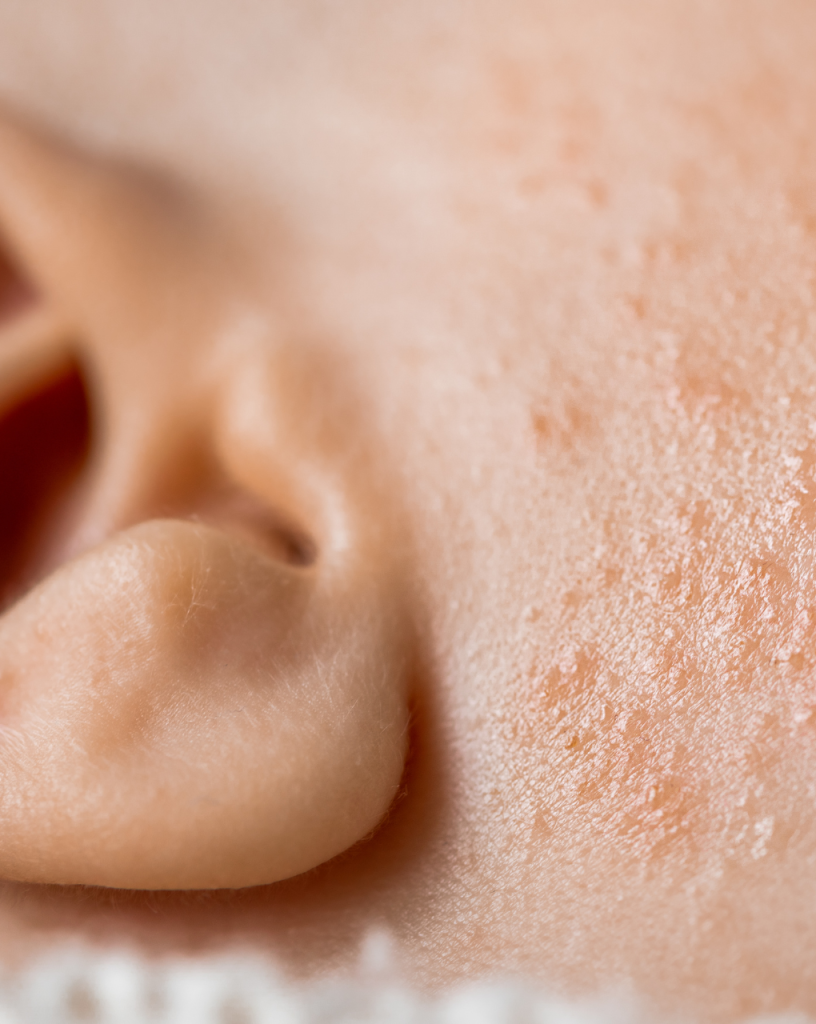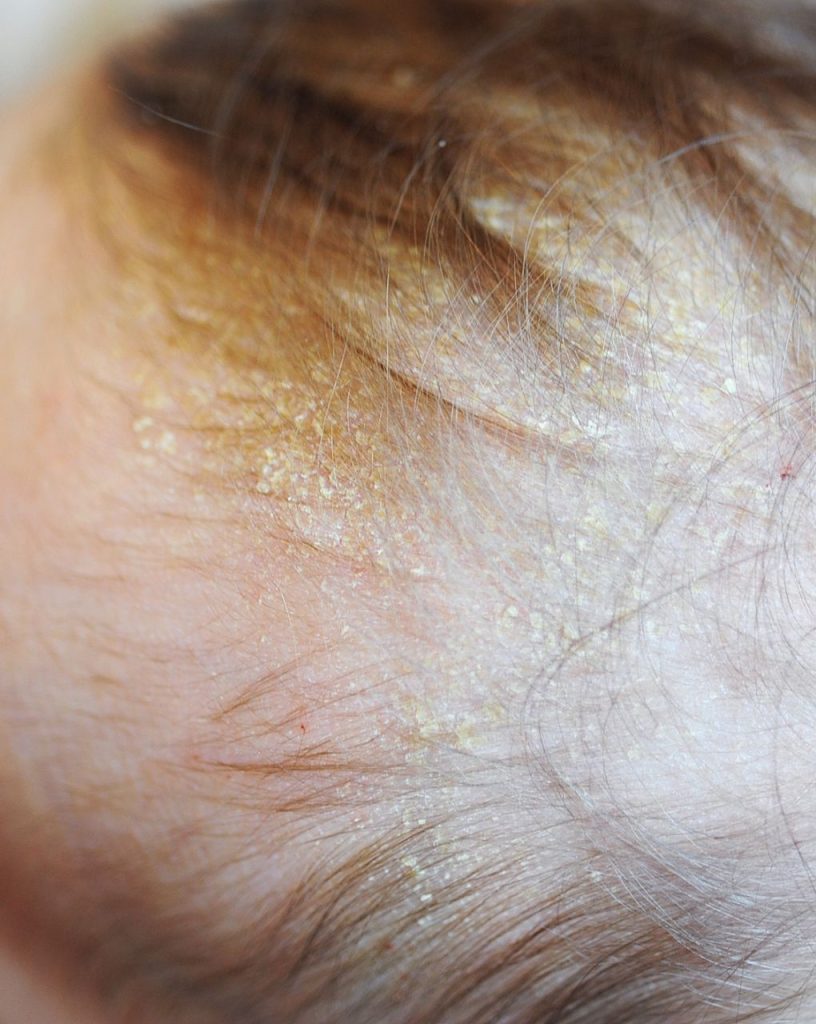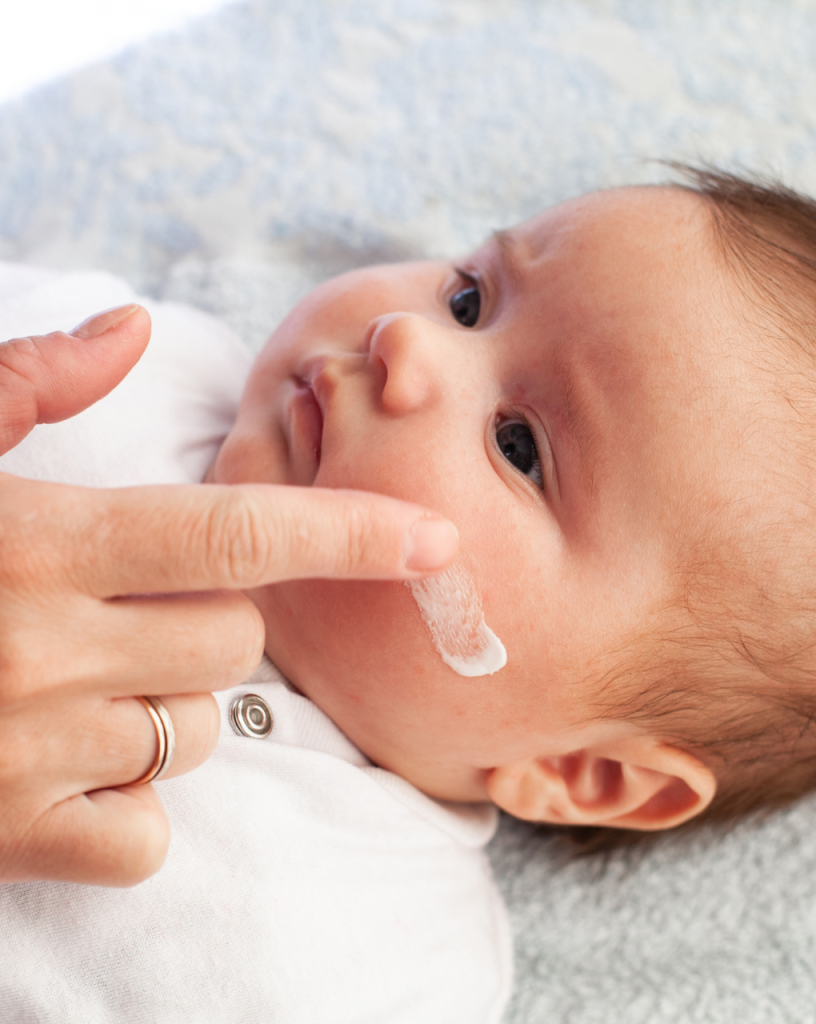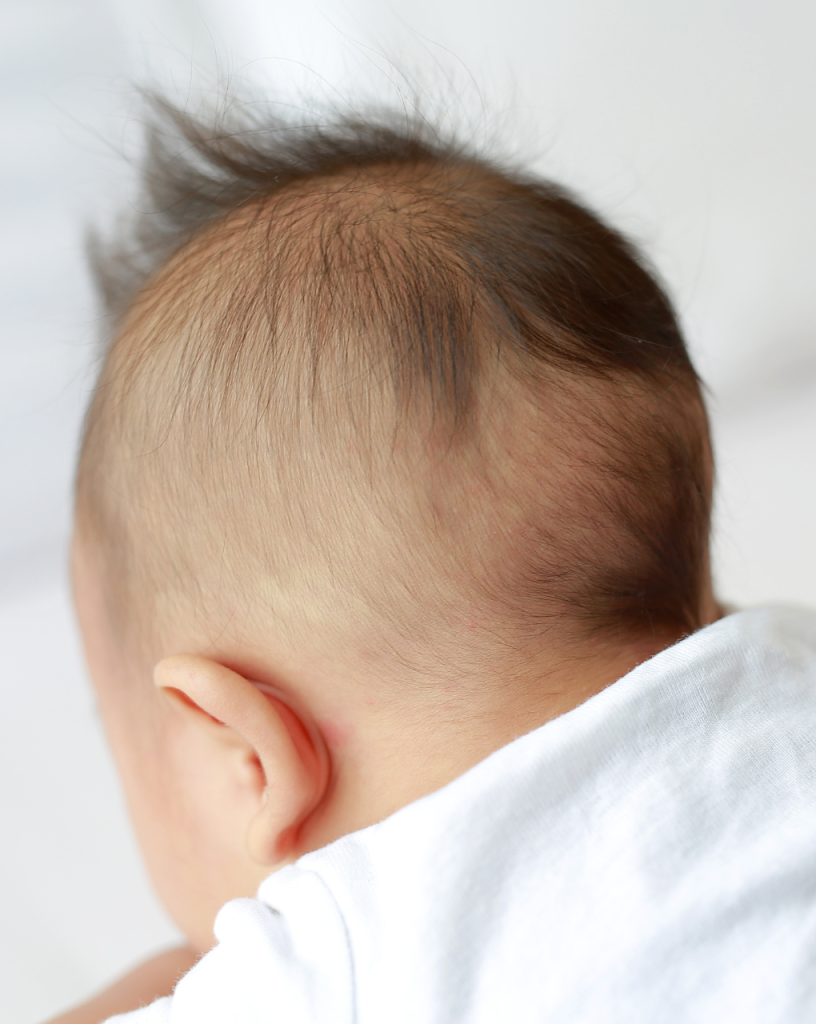- Home
- Health Topics
- Pregnancy to Parenthood
- Common Baby/Skin Concerns
Common Baby/Skin Concerns

Baby Acne
What is it? / What causes it
- Looks like a red, pimply rash on face
- Often occurs in the first few weeks after birth
Treatment
- Often clears on its own
- Wash with clean cloth and warm water; pat dry
- Avoid scented soaps or lotions

Cradle Cap
What is it? / What causes it
- Looks like dry flakes of skin (or scales) in baby’s hair
- It is a buildup of skin oils and scales
- Not contagious
Treatment
- Baby oil or breastmilk can be applied to baby’s scalp; massage into scalp to soften scales
- Wash hair with mild baby shampoo and warm water, then gently brush or comb out the flakes/scales

Diaper Rash
What is it? / What causes it
- Develops when baby’s skin gets irritated from staying in wet or dirty diapers too long
- May be worse for babies with sensitive skin, diarrhea or yeast infection
- May look red and sore.
- Candida (yeast) infection is more severe – usually develops in the groin and buttocks; and becomes very red with raised spots and well defined borders
Treatment
- Wash your hands
- Wash baby’s bottom with mild soap and warm water, then rinse and pat dry
- Allow area to air dry
- Use unscented barrier ointments like Vaseline or zinc based cream
- If no improvement, or rash worsens (such as with yeast infection), consult a health care provider for antifungal treatment

Eczema
What is it? / What causes it
- Looks like a skin rash that is dry, scaly or rough or has tiny red bumps
- Often appears on baby’s face, scalp and arms or legs
- Babies with allergies or family history may be at greater risk
Treatment
- Daily warm baths; pat skin dry
- Allow skin to air dry use
- Unscented moisturizer or Vaseline
- Dress baby in loose cotton, breathable clothing
- If worsens or persists, consult a health care provide

Flat Head
What is it? / What causes it
- Baby’s head looks flat or uneven
- May happen when baby is in one position for long periods of time
- Baby’s skull bones are very soft and flexible and baby’s have weak neck muscles, so it is important to reposition baby to prevent prolonged pressure on one spot
Treatment
- Alternate sleep positions (one day place baby’s head at head of crib; the next day at foot of crib)
- Hold baby on opposite side or with opposite arms
- Do tummy time
- Mild flattening can correct itself; for more serious cases see a health care provider
- Put baby to sleep on their back

